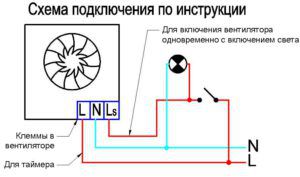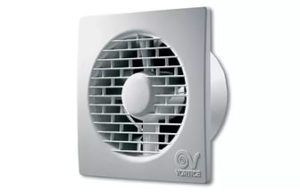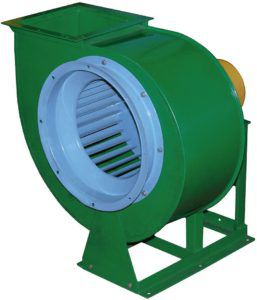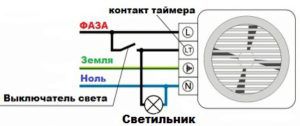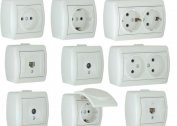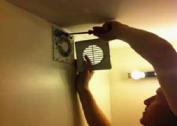Very high humidity and the presence of a large amount of condensation on all surfaces of the bathroom for many are a big problem. An exhaust fan will help to cope with this task.
Why ventilate the bathroom
The bathroom often has a small area, so without constant air circulation, the humidity level will be very high. This will contribute to the appearance of fungus, mold and other microorganisms. In addition, the service life of many building materials used in the arrangement of the premises can be significantly reduced. Since the bathroom does not have windows, the only way to maintain normal humidity is to use padded ventilation systems. Usually they are designed so that air circulation is maintained without additional devices. Check if this is enough by attaching a sheet of thin paper to the hole and letting go. It must be held at the expense of the pressure difference inside and outside and not be filed. If this does not happen, you need a fan that will provide forced air circulation and lower the level of humidity.
Fan specifications
It is impossible to make the right choice of a device without knowing its technical parameters and characteristics. The timer fan has the following features:
- power. In order to determine the required performance, you need to measure the volume of the bathroom and multiply the result by 8 (air exchange ratio recommended by sanitary standards). The received power is the minimum necessary;
- noise level. Both fans with and without silencers are produced. The exact value of the noise produced can be found in the device passport. If it exceeds 30-35 dB, the installation of such a fan in the bathroom is not desirable;
- type of management. The timer on the fan can be set in various ways. By pressing the buttons on the device, by turning the mechanical relay or by a signal from the control panel. It is necessary to choose the most convenient way, although it does not have to be adjusted too often;
- humidity sensor. Using this sensor, it is possible to automatically turn on when a critical humidity level is reached and turn it off when it drops to the required level or turn it on after a person has entered it, and turn it off after a drop in humidity or by a timer signal. This helps reduce energy consumption.
electrical safety
Compliance with safety rules in rooms with high humidity is very important. On the case of the device must be marked, indicating the possibility of its use in such a place. It is permissible to use a fan with a timer with class IPX3 and higher.
| Class | Water protection level |
| IPX0 | No protection |
| IPX1 | Only from drops falling vertically |
| IPX2 | From drops falling with a slope <15 degrees |
| IPX3 | From spraying water |
| IPX4 | From spray |
| IPX5 | From water jet |
Devices with a class higher than IPX5 are not required.
What is a timer for?
When connected via a switch, a device with a timer can operate in 2 modes:
- start work after turning on the switch, finish in 15-45 minutes;
- do not turn on if the light has been turned on for less than 90 seconds, otherwise, after turning off the light, work 15-45 minutes.
The operating time is regulated by a trimmer switch on the device with a screwdriver.
Differences in operating principles
Different types differ in price and technical characteristics: noise level, power. Fans for domestic use can be divided into 3 types:
- axial;
- diametrical;
- radial;
The use of diametrical exhaust fans in this case is usually not required. It is enough to choose between radial and axial.
Axial
The most budget option, in addition, as a rule, with greater productivity. However, the noise level can be significantly higher than that of radial ones. It is recommended to stay on it if the bathroom has a large area.
The device consists of an electric motor and an impeller, with blades mounted on it. The principle of operation is as follows: the engine rotates the wheel, air is captured by the blades and sent to the ventilation channel. If the device is equipped with a check valve, the flow of air from the ventilation to the bathroom becomes impossible, which allows you to protect yourself from dust, harmful microorganisms and insects.
Radial
Consists of a wheel located in a spiral casing. Through the holes between the blades, air enters the device, then it is compressed and passes into a spiral casing, and then into the heating hole. The performance of budget devices is pretty low.
Installation of equipment
Domestic fans can be divided into 2 categories:
- wall mounted;
- channel.
The wall-mounted device is located right in front of the vent. If there is a need to move the device away from the hole (for example, when mounted in a bathroom with a false ceiling), an air duct can be used to connect the fan and the shaft. The design of the duct can be carried out in the gap above the suspended ceiling.
The second type of fans can only be mounted inside the ventilation duct. Usually they are used during work together with a suspended ceiling and are installed inside the duct. Their body can be round or rectangular. You need to choose one that will correspond to the shape of the installed duct. An diffuser is installed at the output. With it, you can adjust the air flow.
The height for mounting the device must be selected as high as possible. The top edge should be 50 mm below the ceiling. If the ventilation hole is significantly lower, it is recommended to move it. Fastening is carried out using self-tapping screws or liquid nails. The choice depends on the weight of the device and the material of the walls.
Mains connection
Typically, a fan is connected to a lighting fixture. In this case, it starts working simultaneously with the person’s entrance to the bathroom, and finishes after some time set by the timer after turning off the light.
Cables are connected in the following way:
- phase - contact L;
- zero - pin N;
- earth - contact earth;
- phase - switch - lamp input - lamp output - timer contact (LT).
You can also use an additional switch without connecting the device to the bathroom lighting. In this case, it is enough to remove the fragment of the lamp input - the lamp output from the proposed scheme. This method is less convenient, since a person has to take more actions to start the device, but it can save electricity by not including the device in some cases (for example, when using a washing machine). It is most convenient if both switches are located in one place.
If the installation is carried out at the time of repair, the cable can be run under the finishing materials on the walls and ceiling. If the repair is already completed, you can use cable channels. It is necessary to ensure that a large amount of water spray does not reach their installation site.In order not to spoil the design of the bathroom, the cable channel can be run close to the ceiling. If the ceiling is made of plastic panels, you can carefully remove them, hide the wiring under them and assemble them back.
Wall Mount Installation Procedure
First, wiring is laid to the installation site. Do not forget about safety. When connecting the cables, the electricity must be disconnected.
- The top panel is removed from the device.
- The cable connects to the fan contacts via a terminal block. The wire connected through the lamp is connected to the first contact of the lamp block, and the second contact is connected to the LT terminal of the device.
- The device is securely mounted on the wall.
- The top decorative panel is back in place. If there is an insect net, it is placed between the device and the panel.
